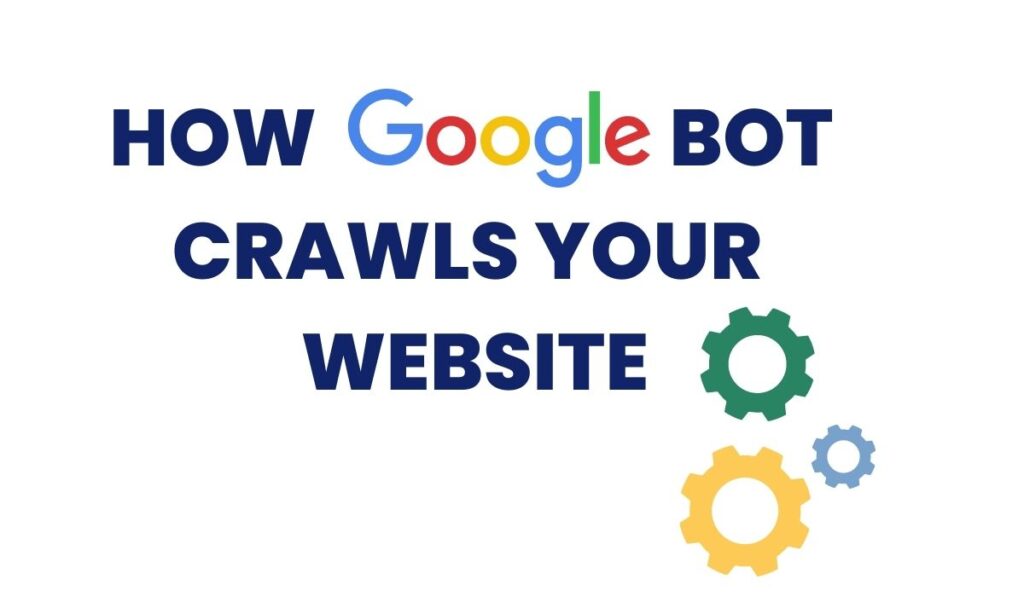How Google Bot Crawls Your Website
Google is the world’s most dominant search engine today, and Googlebot is the most well-known web crawler. Your website must first be discovered in order to appear in Google’s search results. This task is handled by Googlebot. As a result, having a basic understanding of how Googlebot works is beneficial.
A website can only appear in a Google Search result after it has been added to Google’s Index, and there are several ways to influence this. Understanding and controlling the process is critical because mistakes can have serious consequences.
But how do Google bots crawl your website?
We’ve created a guide to help you understand crawling, why it’s crucial for Search Engine Optimisation, and how Google BOT crawls websites. Let’s dig into it!
What is Google Bot?
Googlebot is the generic name for Google’s web crawler. Googlebot is the umbrella term for two types of snails: a desktop crawler that simulates a user on a desktop and a mobile crawler that simulates a user on a mobile device.
Each of these crawlers acts as a user on the corresponding device. It’s worth noting that they both use the same User-Agent token (Googlebot). Still, you can tell which Googlebot visited your site by inspecting the entire user agent string.
Googlebot Desktop and Googlebot Smartphone will almost certainly crawl your website. By inspecting the user agent string in the request, you can determine the subtype of Googlebot. However, because both crawler types obey the same product token (user agent token) in robots.txt, you cannot target Googlebot Smartphone or Googlebot Desktop using robots.txt.
Googlebot does more than just fetch and index content. It also logs metadata, which is later used as one of many ranking factors. Some of the metadata collected by Googlebot include:
- page’s HTTP response status code,
- robots meta value,
- viewport size
- response time
What is Website Crawling?
Have you ever wondered how Google and other search engines index pages so that they can appear in search results? Each search engine employs “bots” or “spiders” to crawl the Internet, inspecting web pages, indexing them, and ranking them for various search queries. Google defines this term as “the number of URLs Googlebot can and wishes to crawl.”
A search engine aims to provide the best possible results for searchers’ queries. They accomplish this by crawling web pages and analyzing the content. Bots crawl pages, copy them and index them on search engines.
How Does Google Bot Crawl Your Website?
Googlebot should not access your site more than once every few seconds on average for most areas. However, the rate may be slightly higher over short periods due to delays.
Googlebot was designed to be run concurrently by thousands of machines to improve performance and scale as the web grows. In addition, to reduce bandwidth usage, we run many crawlers on machines located near the sites that they may crawl. As a result, your logs may show visits from multiple engines at google.com, all with the Googlebot user agent. Our goal is to crawl as many pages from your site as possible on each visit without exceeding your server’s bandwidth.
Let’s look at what happens when someone submits a sitemap via Google Search Console to inform Google about the links on the site.
- Googlebot retrieves a URL from the crawling queue. In this case, it is the sitemap.
- It checks whether the URL allows crawling by reading the robots.txt file (more on that below). Depending on the instructions in the robots.txt, Googlebot evaluates whether it should continue the crawling process or skip the URL.
- If it is not disallowed, i.e. the instructions tell Googlebot to continue crawling, it searches the HTML for all available href links and adds new URLs to the crawling queue.
- The HTML is then parsed by Googlebot. Using Structured Data is highly beneficial at this stage of the process because it simplifies the task of understanding the content of your web page. Javascript can be run by Googlebot. On the other hand, Google recommends server-side or pre-rendering content because it both speeds up your website and aids crawlers in their crawling process.
- Googlebot then repeats the process with a different URL from the queue.
Importance of Crawling on a Website
You must be indexed if you want to rank in search. Bots must be able to crawl your site effectively and on a regular basis if you want to be indexed. You won’t be able to find an online if it hasn’t been indexed, even if you search for an entire paragraph that you copied and pasted directly from your website. Your page may as well not exist if the search engine does not have a copy of it.
There are simple methods for having your site crawled once or twice, but all functioning websites have the structure in place to be crawled on a regular basis. If you update your page, it will not rank higher in search results until it is re-indexed. It is very beneficial for websites to have page changes reflect quickly in search engines, especially since content freshness and date of post are also ranking factors.
Key Takeaway
Consider Googlebot an ally in the execution of your SEO strategy. If you want Google to crawl and list your content, you must not restrict access to your site and check your Google Search Console regularly for updates on the index status of your website. In Google Search Console, you can also look for issues that may be affecting your site’s indexability.

